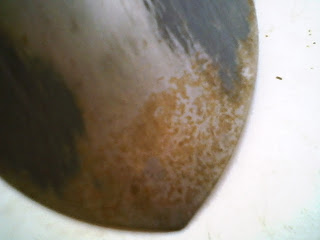so there are good and bad things in the garden,
here is an update,
so my garden was growing along, all this squash growing and not really seeming to do anything, just getting slightly bigger.
but now I am seeing actual things start to grow all over
here are the grapes growing
here are grape leaves drying out and dying on the end of the grape next to the previous one, but the grapes are still growing on it (I think a gopher ate roots and that is why it has a hard time getting water)
here is the last grape, doing very well with green ends and lots of new growing
here are the potatoes that are not fenced and growing in the wood chips and dirt,
seems to me like this is somewhat of a failure, if not a total failure by the time I try to harvest,
they need to be growing in leaves, I can't trap the gophers in this plot and they are not growing particularly well, some show signs of the wrong things in the soil...
the lack of a fence appears to be not bad,
tops of some are chewed off, but clearly it was not liked due to most still being there,
anyway, if using this method of planting, use leaves and rotting leaves !
the squash is massive and covering the ground entirely in some areas
and it has squash on it now
and very little squash hiding all over
the sorghum is just growing slow
the water lotus have put cute round leaves that float out
and here are the roots and leaves growing out of one of the seeds (black) under the water
here is the first tomato out of the garden,
here are the beans coming up from under the dried peas
here are the beans that were planted somewhere else
I had tried to cover them from the insects, but it was to late for all but one
and I covered it again so it will be safe
I found one inch long cucumbers growing
and one on another plant
here is a runner bean actually making a bean
the tops of the onions are starting to fall over everywhere in the garden, so harvest time is near for them
here is a very happy potato flowering that is growing in regular dirt (got it from tom wagner before he had a website to sell things
http://www.newworldcrops.com ),
other potatoes in the regular ground are doing just fine
the radishes are starting to dry out and finish up making seeds (hopefully)
I have no idea why I took this picture
(picture not posted due to being pointless)
what we thought were cherry tomato seeds were not,
they are a striped green tomato
and there are a few of them growing
the southern peas that did get to grow at all are doing well with flowers all over
the flour and sweet corn plot is doing well with tassels and silks all over
the flint corn plot is doing fine
the sunflowers are 2 times the high as the corn and way taller than me
the rice is doing well
one of the mountain yams got all but one leave ate...
it is likely going to be just fine, but good thing I grew backups
the wonderberry is big
with lots of small black fruit that looks just like belladonna, but you can eat them safely
the sugar cane (plant on the left, bay tree is to the right) is looking pathetic as usual
the chuffa is doing well all the places I put it
and the cats sort of like old corn tortillas, they did drag them all out of the food dish, but have not finished them all yet (bet they will by afternoon though
I have spent 2 hours posting all this, I know I missed some things, but I am not going back out in the rain to fix that,
yes it is raining here, so odd and fun !


























































